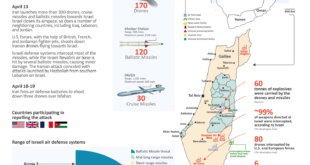The short war between Armenia and Azerbaijan seems to have ended – at least for a time. Undoubtedly, the vast majority of Americans would have trouble finding Nagorno-Karabakh on a map. But the incoming American president and his national security team may want to dwell on this conflict for more than a few minutes.
From the end of September to early November, the blood ran profusely on both sides with many thousands of soldiers killed for both Azerbaijan and Armenia. Civilians also suffered grievous losses. Hundreds of innocents died in missile attacks against small cities and towns, while tens of thousands have been forced to flee their homes. In the Pentagon, and in militaries around the world including the Chinese PLA, the major question concerns the employment of novel technologies and related tactics. While drones had previously been used mainly for intelligence and surveillance (with the occasional assassination), this war witnessed a much more active and offensive posture for the aerial robots. During the Nagorno-Karabakh conflict, the Azerbaijan side skillfully employed drones to paralyze the Armenian air defense systems, also making effective precision strikes on Armenian tanks and artillery systems.
From the American perspective, there are many potentially disturbing implications. The conflict implies that even not especially advanced militaries can make use of imported technologies to overturn local military balances previously believed to be reasonably stable. Then, there is the not very appetizing notion of a small Christian state getting pulverized in a situation wherein aggressive maneuvers (if not outright aggression) appears to have paid handsome dividends for Azerbaijan. There will be the usual Cold War-like interpretations, including that Moscow is using the opportunity to reassert itself in the region, and that Armenia should be wiser in picking its allies next time around. These last so-called lessons of the conflict, regarding Russia’s role, should be examined more carefully, since US-Russia relations, already in the ice-box, appear to be growing ever colder with each passing day. Will the South Caucasus morph into a new front in the rapidly developing “New Cold War”?
Because Vladimir Putin is juggling the twin crises of the pandemic and political instability in Belarus, the Russian President could not have been eager to pull out maps of the South Caucasus. Moreover, to characterize Russia’s relations with Turkey at present as “complex,” would be a vast understatement, given the two countries are now “eyeball to eyeball” in both Syria and Libya. A more hot-headed leader in the Kremlin might well have ordered the Russian Air Force to level Baku, explaining that Ankara would be next. Yet, Putin’s much more measured and calibrated response reflects considerably more than just a bit of personal animus toward the current leader of Armenia, who had run for office on an anti-Russian platform. True, the Russian leader likely enjoys moving his soldiers about more than reviewing the latest Covid-19 numbers, but Putin logically came to the obvious conclusion that an escalating war in the Caucasus is not in anybody’s interest.
It’s worth considering that Putin has put Russia’s own troops on the line as “peacekeepers.” Moving thousands of troops and their equipment into an active warzone hardly constitutes an easy decision, but is instead one fraught with risk. Russian generals must have groaned, as Russia’s armed forces are already badly overstretched as is. Arguably, 2,000 Russian peacekeepers are not adequate to effectively patrol the challenging new cease-fire line. Nor was the crisis diplomacy a simple matter either.
 Eurasia Press & News
Eurasia Press & News



